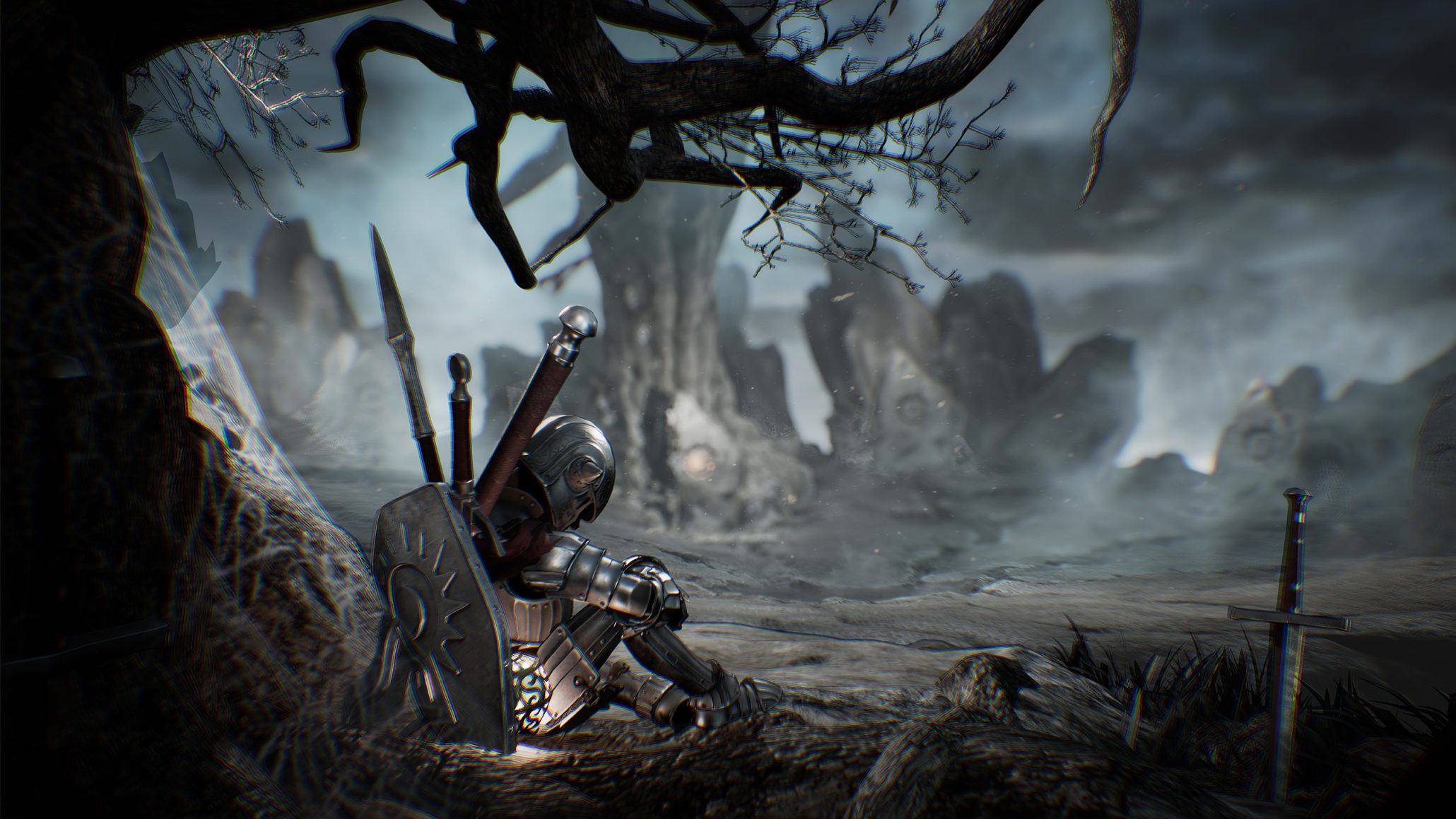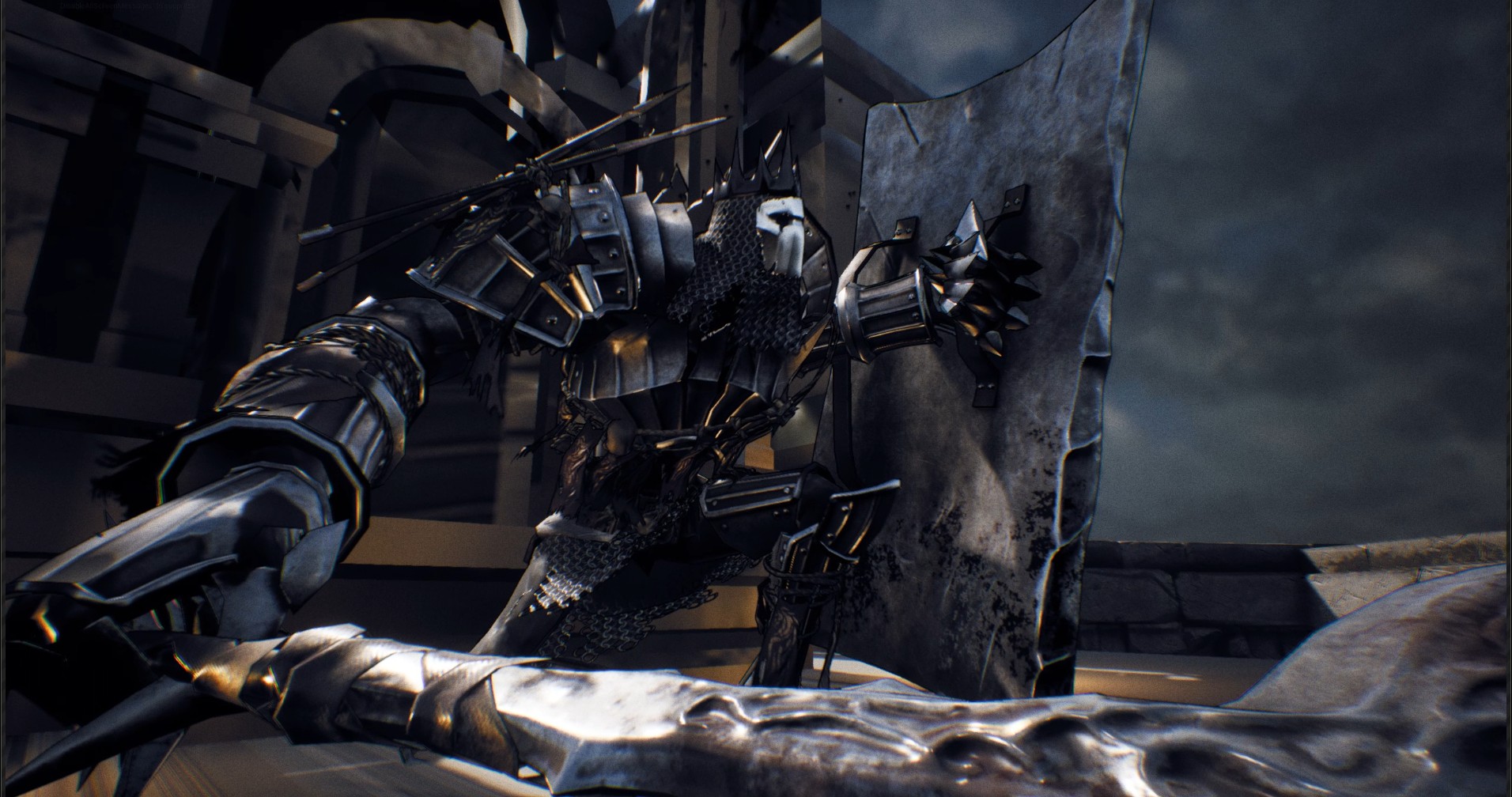Platforms:
Xbox One, PS4, Nintendo Switch
Released:
October 18, 2018
Publisher:
Another Indie
Developer:
DARK STAR
You just need to take one look at Sinner: Sacrifice for Redemption to see the obvious resemblance it bears to the Dark Souls games. I know, I know – way too many games get compared to Dark Souls these days. But in this case, developers DARK STAR have actively stated that they took massive inspiration from FromSoftware’s iconic series. And it really shows – hell, your character even Praises the Sun. Unfortunately, this is also one of the game’s biggest flaws: Sinner sticks so closely to the established formula (without improving upon it) that it never carves out its own identity.
The premise is simple enough. You are Adam, an adorable little knight clad in armour and wielding a comically large sword. You’re in some sort of purgatory realm where you have to battle manifestations of the Seven Deadly Sins to atone for your past transgressions. There is some deeper story here, but I will freely admit that I didn’t follow it. If Sinner was trying to recreate that Soulsbourne feeling of having absolutely no idea what’s going on story-wise, then it certainly succeeded.
The basic mechanics shouldn’t come as a shock to anyone familiar with the genre – you can lock on to your target, dodge, block and run. You have a stamina bar to manage. In terms of weapons, you can switch between a short sword and shield, and a larger 2-handed sword, both of which have a light, heavy and charged attack. You can also unlock more weapons, but they’re only accessible after completing the game.
There are two things that ostensibly differentiate Sinner from the Soulsbourne series it seeks to imitate: first, the game is made up entirely of boss fights. There are no levels or any other enemies – it’s just you and those Seven Deadly Sins (although some also spawn some cannon-fodder underlings). Each Sin has their own distinct flair and unique gimmick to keep you on your toes, and you can tackle them in any order you choose.
The second and more interesting difference is that Sinner weakens your character as you progress through it. For each Sin you fight, you will get a permanent debuff that stays with you for the rest of the game. For example, fighting Pride leads to your damage output being reduced, while Envy lowers the amount of available items in your inventory.
“… the levelling down mechanic ends up feeling fairly trivial and gimmicky, rather than something that sets Sinner apart from the herd.”
This unique “level down” mechanic is how Sinner tries to distinguish itself from all the other Souls clones that have come before it. And while permanently debuffing your character is an interesting enough concept, the reality is that only a few of the downgrades actually matter. Most are inconsequential, mainly because the game is too generous with what it initially provides players with – you have access to way more utility items than you need at the start of the game, all of which replenish after every fight. So when they start being taken away from you, it doesn’t leave much of an impression. Consequently, the levelling down mechanic ends up feeling fairly trivial and gimmicky, rather than something that sets Sinner apart from the herd.
Still, it does force you to strategise, if only a little – mainly in regards to the order you take on the bosses. For example, I had to undo my victory on two Sins I defeated early in the game, because the downgrade I received from them made my remaining fights that much more difficult. You always have the option to ‘get back’ what you’ve sacrificed – it just means you’ll have to fight the associated boss again later down the line.
On the subject of bosses: there are eight here in total (the seven sins and a final boss), and they vary wildly in terms of quality. Some are pretty great – there’s three in particular that felt very polished, balanced and satisfying to fight. I never felt frustrated when I died repeatedly to them – instead I felt more determined than ever to beat them. To me, that’s a clear indication of a well-crafted boss. Besides the final fight (which is a clear stand-out) my favourite boss was Envy – a regal headless woman composed of a dark and light side, both of which tag-team to try and kill you.
But there are also a few bosses that fall flat, both in terms of visual design and how enjoyable they are to engage with. Some have tedious mechanics (for instance, Greed just spends the entire fight spraying various types of ranged poison at you), while others just feel unimaginative and bland, with tricks we’ve all seen many times before (lookin’ at you, Wrath!). These less impressive fights can feel more like an endurance slog than an engrossing battle, and in a game that relies solely on the quality of its bosses, that’s an issue.
That being said, Sinner’s combat generally feels pretty good. It’s not as nuanced, as difficult or as fun as the games it takes inspiration from, but it still feels enjoyable enough in its own right. Adam is smooth and responsive to control, and his heavy attacks feel suitably weighty. While some of the bosses are uninspired, the fights themselves are challenging and fair. When you die, it’s (usually) because you’ve been too greedy or impatient. When you swing that final killing blow, there’s still that delicious mixture of satisfaction and relief. I found myself smack-talking and yelling at my TV in celebration after almost all of my wins, and a game that can consistently elicit those kind of reactions from you is doing something right.
“Sinner falls down when it comes to the game’s atmosphere, or more accurately, its total lack thereof.”
Unfortunately, Sinner really falls down (and l mean *REALLY*) when it comes to the game’s atmosphere, or more accurately, its total lack thereof. With a few exceptions, the boss arenas look unpolished and quite frankly, a little ugly. The sound design is also poor. A lot of actions, including the very important ‘attacking’ and ‘getting hit’ ones, are accompanied by monotone, muffled sound effects that don’t give a clear indication of what just occurred on screen.
And arguably the game’s greatest sin (can you believe it took me so long to make that pun?!) regarding its atmosphere is that the soundtrack is beyond mediocre. If you’re going up against the same boss, potentially many times over, the music can really set the mood for the fight. I died to Bloodborne’s Cleric Beast roughly 1000 times, but that fight was made infinitely more bearable because of the epic theme that accompanied it. Comparatively, Sinner’s music is so generic and indistinct that you likely won’t even notice it – at least not in a good way.
Positive:
- Some well designed and challenging bosses
- Fluid combat that feels fair and satisfying
Negative:
- Some tedious and uninspired bosses
- An interesting mechanic that squanders its potential
- Lacks atmosphere and fails to establish its own identity
- Bad sound and music design
There’s nothing particularly unique about Sinner – there’s nothing here that improves on what has come before it. Its only interesting mechanic feels trivial and unimportant. Its saving grace is that, despite its simplicity, the combat still feels fluid and fun, and some of the bosses are awesome. If all the bosses were of the same standard, I’d easily suggest the game to anyone who’s looking to fill that Souls-sized hole in their heart. As it stands though, Sinner’s lack of any personality and its unpolished presentation makes it a hard title to outright recommend.














